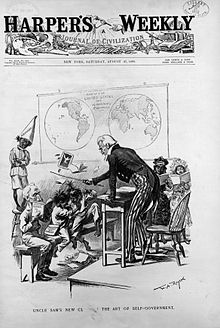
Back Càstig escolar Catalan Schulische Disziplin German Disciplina escolar Spanish Distsipliin koolis Estonian Sanction scolaire French משמעת במסגרת החינוכית HE विद्यालय अनुशासन Hindi 校則 Japanese ശിക്ഷ സ്ക്കൂളുകളിൽ Malayalam Disiplin sekolah Malay
This article needs additional citations for verification. (January 2024) |


School discipline relates to actions taken by teachers or school organizations toward students when their behavior disrupts the ongoing educational activity or breaks a rule created by the school. Discipline can guide the children's behavior or set limits to help them learn to take better care of themselves, other people and the world around them.[1]
School systems set rules, and if students break these rules they are subject to discipline. These rules may, for example, define the expected standards of school uniforms, punctuality, social conduct, and work ethic. The term "discipline" is applied to the action that is the consequence of breaking the rules. The aim of discipline is to set limits restricting certain behaviors or attitudes that are seen as harmful or against school policies, educational norms, school traditions, etc.[1] The focus of discipline is shifting, and alternative approaches are emerging due to notably high dropout rates, disproportionate punishment upon minority students, and other educational inequalities.[citation needed]
- ^ a b "What is Discipline?". users.metu.edu.tr. Retrieved May 17, 2016.